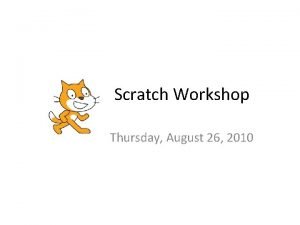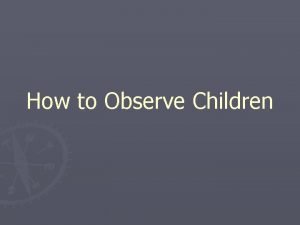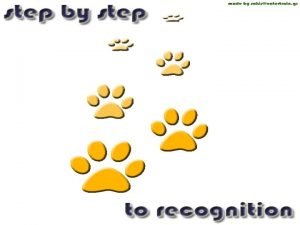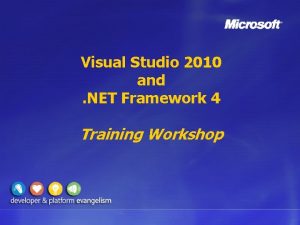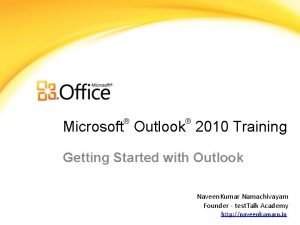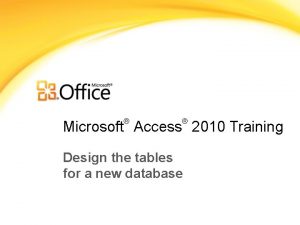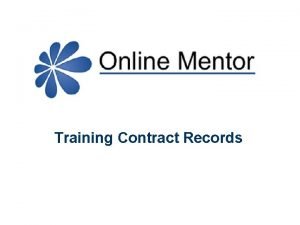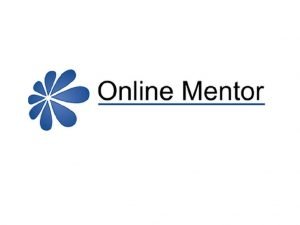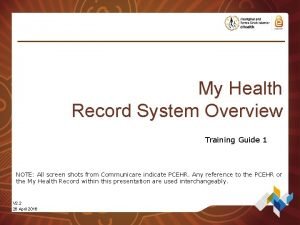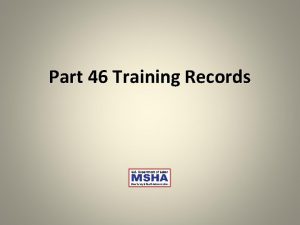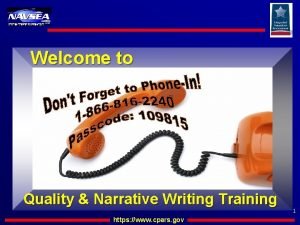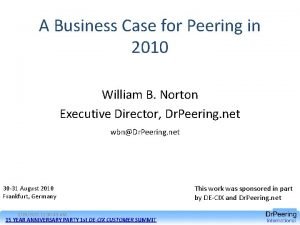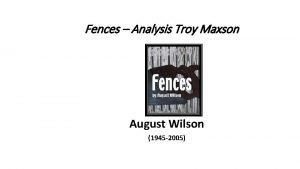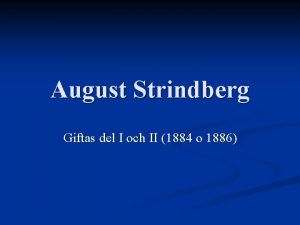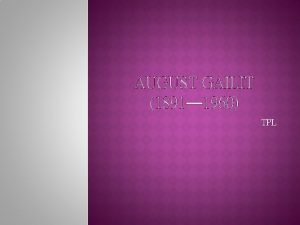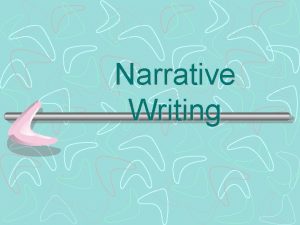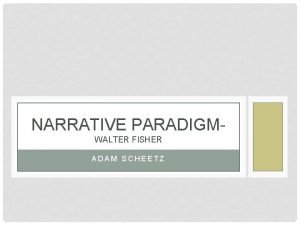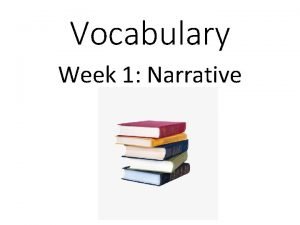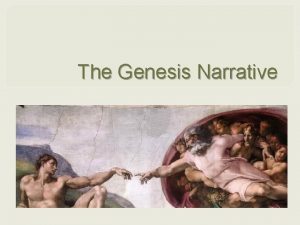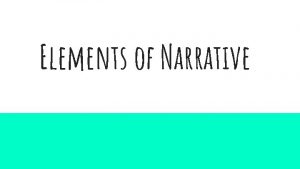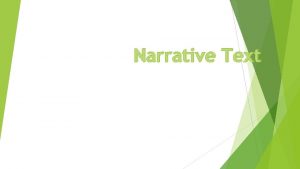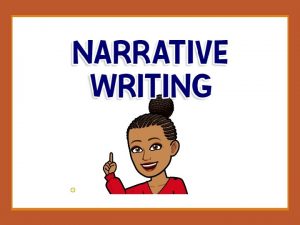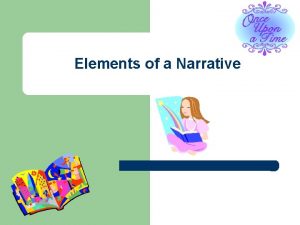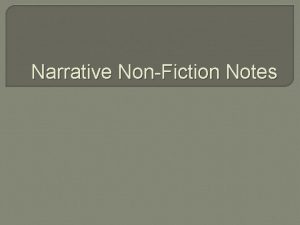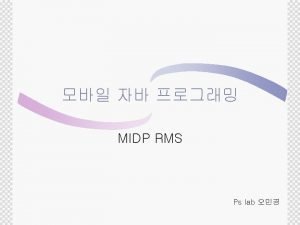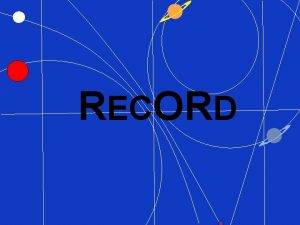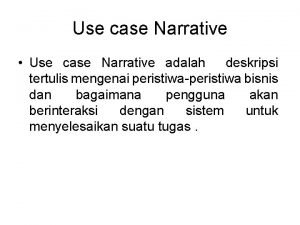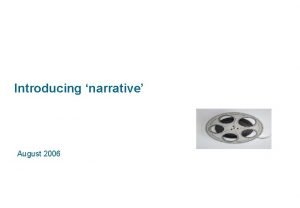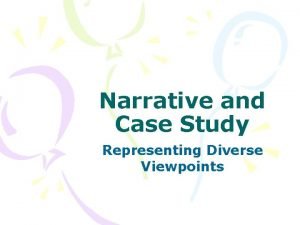Case Record and Case Narrative Training August 2010



























- Slides: 27

Case Record and Case Narrative Training August 2010 Department of Elder Affairs Staff 1

Objectives Present the components of the case record Present the components of the case narrative Provide information to evaluate the quality of the case narrative Detail covered/billable case management and case aide activities 2

MW Case Record and Case Narrative Case Record contains current client information, including: ◦ Eligibility documents, level of care determinations ◦ 701 B assessment, physician referrals ◦ Care Plan ◦ Case narratives ◦ Service Authorizations ◦ Budget Form ◦ Signed forms (release of information, grievance/fair hearing and provider choice, etc. ) Case Narrative contains a signed and dated note of each case management activity on behalf of the client, including: ◦ Documentation of how care ◦ ◦ plan needs are addressed Documentation of completed 701 B (initial and annual) Client contacts (phone calls & face to face visits) Documentation of service receipt, service satisfaction & barriers to services Documentation of any client changes 3

GR/OAA (Case Managed Only) Case Record and Case Narrative Case Record contains current client information, including: ◦ Eligibility documentation ◦ 701 B assessment ◦ Care Plan ◦ Case narratives ◦ Service Authorizations ◦ Signed forms (release of information, grievance, etc. ) ◦ HCE: HCE Financial Worksheet and DOEA Notice of Case Action ◦ ADI/CCE: Co-Pay Assessment Case Narrative contains a signed and dated note of each case management activity on behalf of the client, including: ◦ Documentation of how care plan needs are addressed ◦ Documentation of completed 701 B (initial and annual) ◦ Client contacts (phone calls & face to face visits) ◦ Documentation of service receipt and barriers to services ◦ Documentation of any client changes 4

Do Not Duplicate… The DOEA 701 B assessment instrument is the foundation for writing a justifiable case narrative. The case note should not be an essay repeating verbatim everything covered on the 701 B; it should be a summary of the interview with the client and any observations of facts not captured in the assessment. 5

Required Contacts When Type MW Monthly Telephone or Face-to-face GR Monthly Telephone or Written Correspondence MW Quarterly Face-to-face Activity Program Assess Client Status ADA (Telephone), ALE (Face-toface) Confirm Caregiver Eligibility HCE* Care Plan Review ALE, ADA GR Semi-annual Face-to-face Care Plan Review ADI, CCE, HCE (LSP and OAA Case Managed Clients) Annually Face-to-face Assessment/ Reassessment ADA, ALE, ADI, CCE, HCE (LSP and OAA case managed clients) GR 14 Business* Day Follow-up Telephone or Face-to-face Service Initiation or Referral ADI, CCE, HCE (LSP and OAA Case Managed Clients) * This can be done by a case aide with CM supervision. 6

OBSERVATIONS! Case narratives must contain the case manager’s observations of the client: ◦ What did you see in and around the home? ◦ What did the client or the caregiver say? ◦ How did the client appear? Note: Observations are based on FACTS. 7

Examples of Significant Observations 1. 2. 3. 4. 5. 6. 7. 8. Client’s hygiene and grooming Client’s dress Client’s facial expression/affect Client’s mannerisms Client’s response to others or to activities Client’s interaction with the case manager or service worker Caregiver changes No significant changes with client or caregiver 8

To Detail or Not to Detail? The note describing the initial client visit or annual visit typically will require more detail than any other narrative that follows. A note for a subsequent call or visit will focus on what has changed since the last contact. Document actions taken to resolve issues. (IF IT IS NOT WRITTEN, IT NEVER HAPPENED! ) 9

Narrative Elements Type of Contact ◦ Face-to-face (Where? Client home? ALF? etc. ) ◦ Telephone call, others Purpose of Contact (to provide case management activity) ◦ Annual, quarterly , semi-annual, monthly or 14 -day follow-up ◦ Client requested case management service ◦ Referral made on the client’s behalf ◦ Additional action taken to resolve issues 10

Narrative Elements Assess Client Status Example: Client Changes ◦ ◦ ◦ ◦ Caregiver related Emotional Environmental Financial Physical Social Service related Mental 11

Narrative Elements Assess Services Example: Services ◦ ◦ Are services in place? Is the client satisfied with service(s)? If not, why not? Have service needs changed? Always document any and all referrals made on the client’s behalf as well as the coordination/ facilitation of those referrals. 12

Initial Assessment Note Assessment notes provide clarification and any additional relevant information not covered in the 701 B Assessment notes cover all contacts and visits made in completing the assessment 13

GR 14 -Day Follow-Up Note Service/Referral Satisfaction Quality of Service Quality assurance interviews a. Rapport with service worker(s) b. Service worker attitude c. Service worker compliance d. Service worker dependability e. Client/Caregiver evaluation 14

MW Monthly Note Monitor client changes Monitor receipt of, and satisfaction with, services 15

HCE Monthly Note Purpose is to confirm that the caregiver provided care to the client during the month. ◦ Caregiver may sign a form attesting to eligibility each month and submit it to the case manager. ◦ Confirmation may be made by telephone contact with the caregiver and documented in the narrative. 16

Semi-Annual or MW Quarterly Care Plan Review Note Monitor continuity of services Monitor that client needs are being met Monitor client changes to make sure service increases or decreases are warranted Authorize services as appropriate based on need ◦ Note: Any case notes regarding a change in the care plan must include a notation by the case manager that the recipient is in agreement with the change. 17

GR Semi-Annual Review Note Address each problem/gap listed on the care plan Describe progress, barriers, problems and gaps Monitor continuity of services Monitor that client needs are being met Monitor client changes to make sure service increases or decreases are warranted Acknowledge client/caregiver improvements and the corresponding service changes or termination Authorize services as appropriate based on need 18

Reassessment Note Reassessment notes provide clarification and additional relevant information not covered in the 701 B Reassessment notes cover all contacts and visits made in completing the reassessment Reassessment notes cover any changes from the previous assessment and any other significant changes ◦ Updated assessment notes are produced when there has been a significant change in the client’s condition outside of the regularly scheduled assessment dates 19

Note Review At the end of your note, ask the following: Does the note justify the time billed? If not, why not? What should be included or left out? Did you record the actual times spent and units of service in the case note? Note: Travel time and time spent documenting the case note are included in the note entry. 20

Case Management Billable Activities Reimbursable Activities (not specifically addressed) 1) Assisting applicants with enrollment and the Medicaid eligibility application process (if applicable) 2) Conducting and reviewing client assessment and reassessment for service needs 3) Developing and reviewing plans of care 4) Arranging for service delivery 5) Following up and monitoring service provision and quality of services 6) Recording case management activities in the recipient’s record 7) Recipient visitation 8) Telephone, travel time and recording of progress notes associated with billable activities 9) Case closure and termination* v Prior authorization documents, warranty information on equipment purchases, price quotes, assistance with grievance process. v Client specific inter-agency consulting/staffing/communicating (examples: medical professionals, provider agencies, other case management agencies/their case managers, other external entities) • MW cannot bill after date of death or after nursing home/hospital entry. GR has 60 days after date of death. 21

Case Aide Billable Activities Reimbursable Activities (not specifically addressed) 1) Assistance with implementing plans of care v Contact with persons to monitor service receipt and satisfaction 2) Oversight and supervision of provider training activities v Documentation of activities in case record 3) Paraprofessional tasks intended to maximize productivity of case managers v Telephone and travel time associated with billable case aide activities 4) Delivery of supplies and equipment to persons when shipping cannot be arranged* 5) Assistance with paying bills* 6) Assistance with accessing medical and other appointments* * ADI, CCE, HCE, and LSP and OAA case management only 22

Tips to Keep in Mind There may be additional requirements based upon the program. Be sure to include required documentation. EVERY contact on the client’s behalf is recorded in the case note. IF IT IS NOT WRITTEN, IT NEVER HAPPENED! If you are unsure, refer back to the DOEA Programs & Services Handbook or the Medicaid Waiver Handbooks. 23

Tips to Keep in Mind cont. … Case notes should not be repetitive or contradict previously stated documentation. They should provide a fresh picture of the client’s current condition. Keep in mind that what you write down can potentially be seen by a client, caregiver or other provider. 24

PSA 8: Case Narrative Tool Presentation -Gail Holton 25

Any Questions? 26

References 1. 2. 3. Summers, N. (2001). Fundamentals of Case Management Practice Belmont, CA: Wadsworth/Thomson Learning. Medicaid Waiver Handbooks DOEA Programs and Services Handbook 27
 August 26 2010
August 26 2010 Anecdotal record vs running record
Anecdotal record vs running record Education and training 2010
Education and training 2010 Education and training 2010
Education and training 2010 Best case worst case average case
Best case worst case average case Visual studio 2010 training
Visual studio 2010 training Microsoft outlook 2010 tutorial
Microsoft outlook 2010 tutorial Access 2010 training
Access 2010 training Ms excel 2010 training
Ms excel 2010 training Access 2010 training
Access 2010 training Sra training record template
Sra training record template Trainee solicitor training record
Trainee solicitor training record My health record training
My health record training Oow deck
Oow deck New miner training record/certificate
New miner training record/certificate Cpars quality and narrative writing training
Cpars quality and narrative writing training A business case for peering in 2010
A business case for peering in 2010 Fictional narrative
Fictional narrative Difference between narrative and story
Difference between narrative and story February march april may june july
February march april may june july Do que miranda amiga de via chamava august
Do que miranda amiga de via chamava august Julie august
Julie august It was late summer 26 august 1910
It was late summer 26 august 1910 Fences character analysis
Fences character analysis Ayon sa kaligirang pangkasaysayan
Ayon sa kaligirang pangkasaysayan August leyweg 4
August leyweg 4 August strindberg giftas
August strindberg giftas August gailit
August gailit
